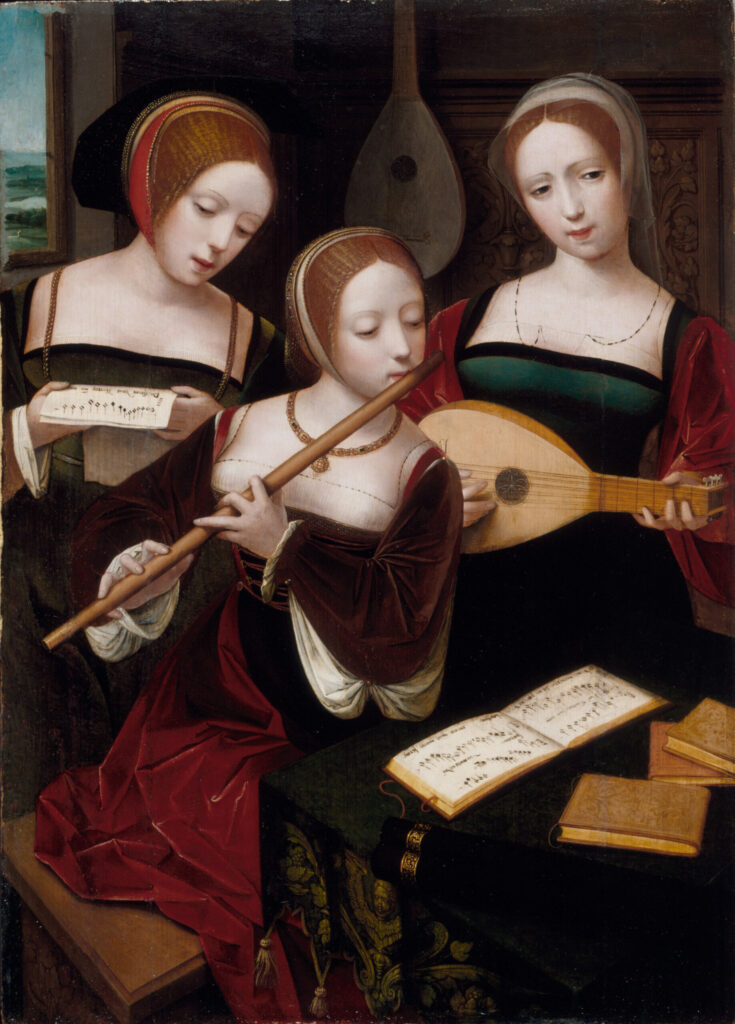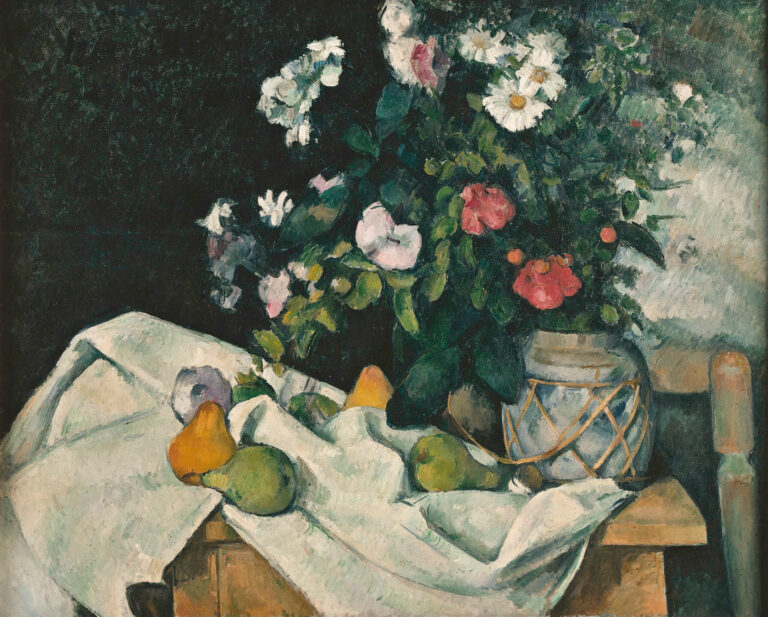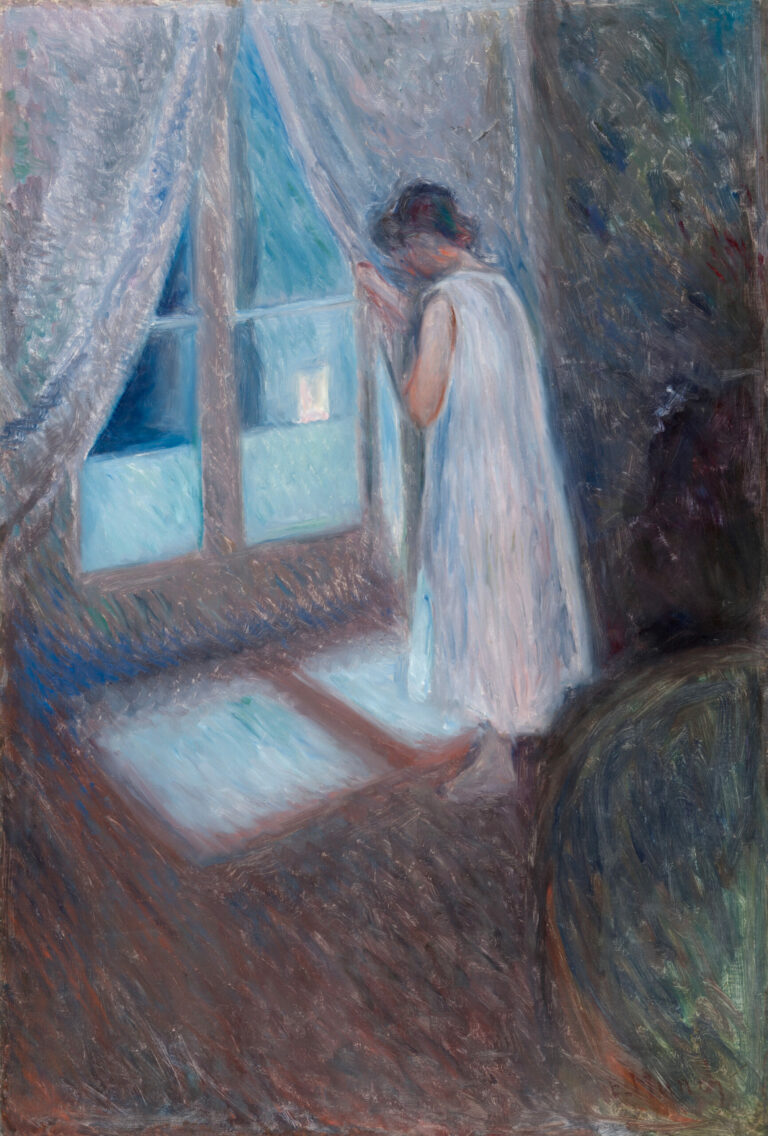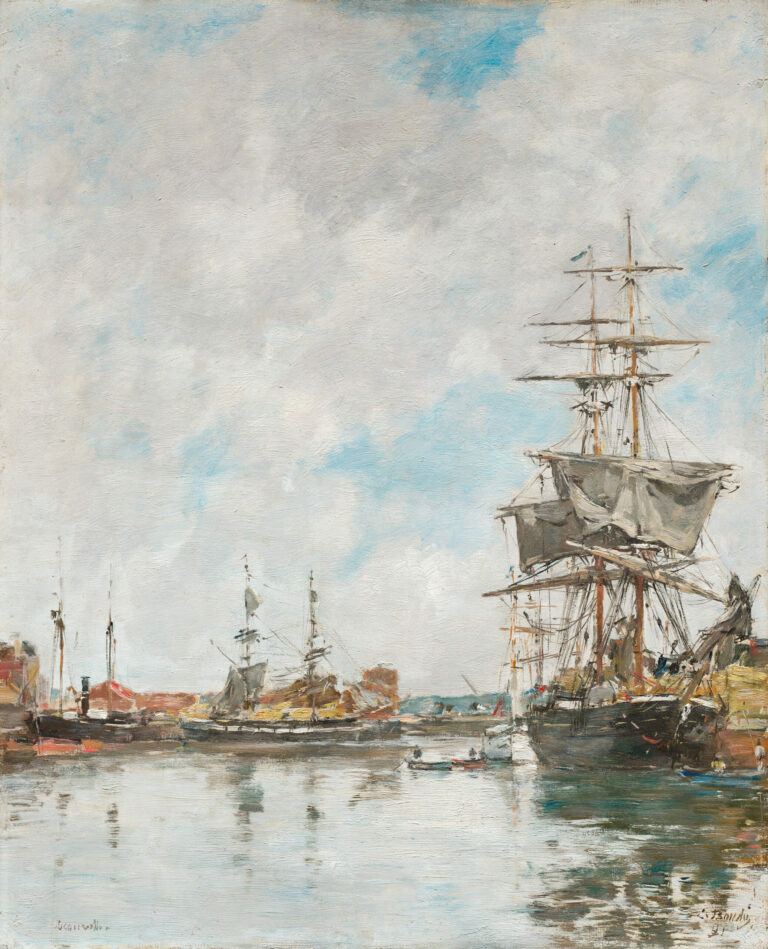
Flanders, circa 1530. In a bourgeois interior, three young women gather around music. One reads a score, the second blows into a transverse flute, the third plucks the strings of a lute. Time seems suspended in this scene of refined intimacy.
A Visual and Musical Harmony
The three musicians wear precious headdresses that frame their delicate faces with lowered eyes. Their brightly colored dresses create a striking chromatic rhythm. The painter attends to every detail: the open scores display actual musical notes, the instruments are rendered with a goldsmith’s precision. Light caresses the milky complexions and makes the golden embroidery gleam. In the foreground, closed booklets and an unfolded score attest to the seriousness of this musical practice.
Music, Noble Art of the Renaissance
This painting celebrates music as a social and spiritual achievement. In the sixteenth century, playing an instrument revealed the education and virtue of young women from good families. These private concerts embody the humanist ideal of the Flemish Renaissance. The Master of the Female Half-Lengths excels in this prized genre: half-length figures, focused on their artistic activity.
The Master of the Female Half-Lengths, a Mysterious Virtuoso
The Master of the Female Half-Lengths remains anonymous. Active in Antwerp between 1520 and 1540, he created refined scenes showcasing female musicians, card players, and readers. His style is recognizable by the elegance of poses, the richness of costumes, and the attention paid to objects. This LACMA work perfectly illustrates his sophisticated manner.
Think about it
💭 What melody might they have played together? Imagine the sounds blending in this silent room.
About This Work
- The Three Musicians, by the Master of the Female Half-Lengths, circa 1530, Los Angeles County Museum of Art (LACMA)
- Oil on wood panel, 53.02 × 37.94 cm (20 7/8 × 14 15/16 in.)
- Los Angeles County Museum of Art (LACMA)
- https://collections.lacma.org/node/173789






